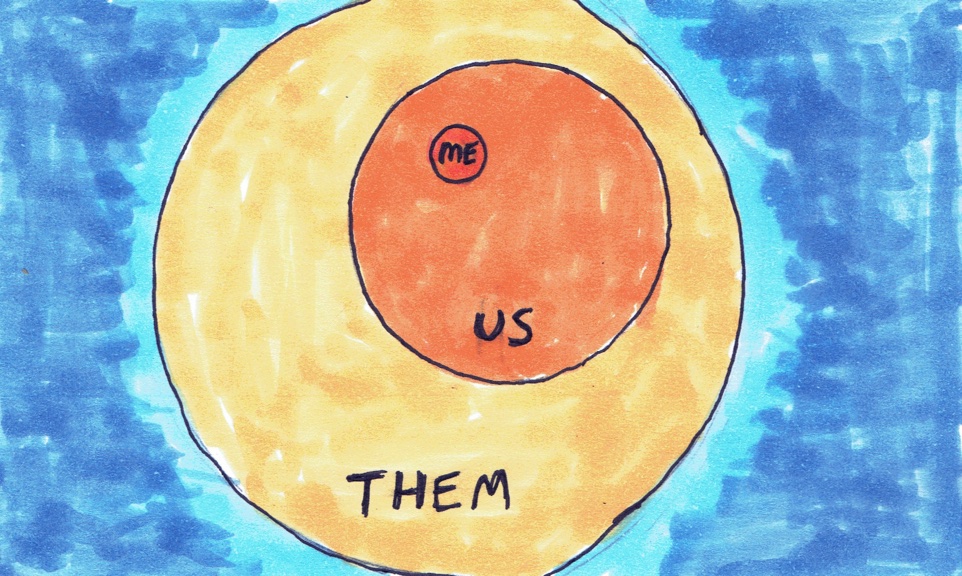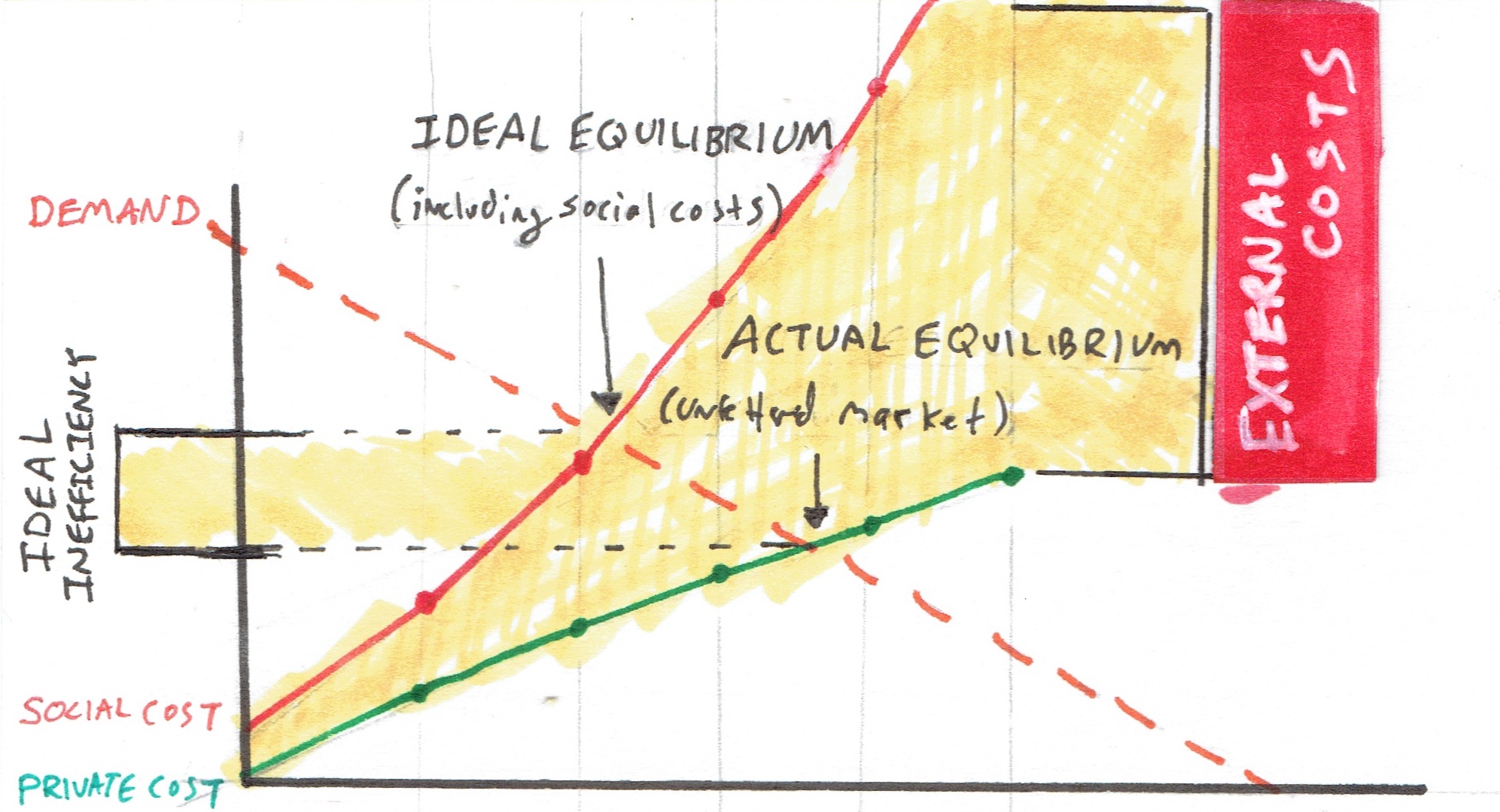Externalities
The rose and the thorn, and sorrow and gladness are linked together. - Saadi Shirazi
Your house probably didn’t catch on fire last night … so have you considered thanking your neighbor?
Three years ago your neighbor spent a few hundred dollars to have an electrician upgrade the bathroom outlets of the finished basement to GFCI. Last night, when the heat tape wrapped around her water pipes shorted out, the current was cut before it could pass the spark and heat into the adjoining foam insulation. Her house did not burn down at 2:30 am this morning, and the resulting inferno did not burn down your home with it. The whole block should give her a hearty handshake for saving the neighborhood - and you should probably help her thaw her pipes.
While a terrible burden to anyone doing construction, GFCI outlets and modern building codes provide our collective housing with a herd immunity. Our neighborhood - an ecosystem - is more resistant to combustive decline with mandatory safety standards in place. This torrent of small inconveniences, including UL licensed appliances and that little tab that makes one side of the electrical plug just slightly wider so it doesn’t go into the outlet the way you want it to, are safeguards to defer disaster.
Every time you cut the third prong off a plug so you can cram it into an outlet wired in the 1970’s, realize that you are making the same mistake as those poor parents that fell for the anti-vaccination movement. The recent news about Disneyland and measles outbreaks are the result when those rules aren’t - or can’t be - rigid enough. If enough of us voluntarily immunize our children against disease, then public places don’t need to create and enforce rules barring non-immunized children.
Because some do defer inoculation or cut off that third prong, building codes, electrical ratings and CDC responses are overbuilt in an attempt to provide enough buffer capacity in the herd immunity and so limit the impact of those of us who don’t follow the rules. Behaviors like careless fire management inadvertently drive the forces of public policy to overcorrect - providing policies that can seem overbearing.

Externalities are Effects
An externality is an effect - negative or positive - which was not anticipated, and possibly is not within the awareness of the agent causing the effect. One of the largest externalities is so pervasive, many people don’t consider it very often at all.
The behavior of modern society has grown accustomed to an environment with an enormous amount of overcapacity in the form of untapped mineral resources, clean water, and abundant capacity in the atmosphere to absorb both carbon and heat. We have a great old world, and her bounty is immense.
All of these gifts were discovered by us, but delivered to her by the ancient deaths of distant stars, coalesced from intergalactic stardust by massive nuclear, gravitational, and centrifugal forces. Those bounties are so great, it still eludes many people how we could ever possibly run out of them.
This is a rather extreme view of externality, perhaps the most extreme. Most examples of externality will fall somewhere between a GFCI outlet and the creation of the universe.
Accountants call an externality an “external diseconomy” - something to be left out of proper economic discussion. Externalities are so contrary to traditional business sense, they actually form the basic argument against strict free market thought.
A classical demand curve shows that price drops as supply increases when a market responds to provide products to meet that demand. Let’s say it costs x for a private enterprise (a company) to create something. We’ll also calculate the external costs, those not borne by the company, and call them e. The cost to society and the environment of that creation is x+e - we add them together, because the company itself is also part of society.

In other words, because externalities always exist, the cost to society as a whole to create a product is always higher than the cost to the private enterprise, and those externalized costs don’t appear on the company’s balance sheet. This compels companies to push more and more of their costs into externalities. Since they don’t pay for them, they don’t affect the end price of a product, or its profit margin.
The fast food company can’t be held responsible for the increased health costs and shortened lifespan created by it’s bad food. The chocolate company is not held responsible for the increased costs of rescuing kidnapped children from nearby villages in north Africa, and does not pay any penalty for their decreased quality of life.
The public is quick to blame “corporate greed” for these travesties. Surely, corporate mandates dictating infinite growth, maximum profit and myopic vision toward solely internal issues play a large role in the schism. I addressed this to some degree in “Getting Your Fair Share” Take a look there for perspectives on putting limits on growth and the need to return value locally.
If you are shocked at the state of child labor in foreign countries, or by the glut of poor nutrition among many people in the western world, much of the recrimination can be placed on this bias towards externality.
But, looking deeper, in addition to those industry forces, there is also an undeniable causation - the massive pressure caused by the public’s level of consumptive demand coupled with price consciousness. Your and my purchasing decisions together create a force that can’t be ignored.
This force is compounded by the disconnectedness most consumers have with the supply chain. We don’t have exposure to the appropriated children or the under-compensated adults toiling to harvest our cocoa, bananas, cocaine and coal in distant places. The levels of leverage created on the market are immense - and leverage creates motivation.
To a larger extent than ever before, every person that ever lived, even those that haven’t been born yet, are all stakeholders in the the same wibbly wobbly timey-wimey never ending design that we’re all building together.
That’s a lot to take in. It leaves us as small business owners, community leaders, and even individuals with the question “What is our responsibility to detect and predict the connections we have to these externalities?”
Whenever we feel adrift in the planning process, we need to fall back to our ethical compass. For those practicing permaculture, all three of our ethics can help guide us here: Care for the Ecosystem (Earth Care), Care for the People (People Care), and Reinvesting in Our Community (Fair Share).
Care for the Ecosystem
Consider the inputs and outputs in your life and your company and organization. Where do they come from, and where do they go? Generally, the further something travels and the more processing steps it undertakes during it’s journey, the higher the cost of creation. But that’s only half of the equation. Divide it’s total cost of creation, maintenance and disposal by the length of it’s lifetime - and consider those externalities that take it right back to it’s source and it’s eventual reintegration into the environment. Those items that generate more energy, value, or utility over their lifetime than their lifetime cost are regenerative, those that don’t are degenerative. Do the math - don’t guess.
Care for the People
Identify your stakeholders. Consider them with respect. If something can’t be done without causing injury to someone else, then in most cases, we should reconsider our approach. Now, making a profit isn’t injuring someone - the exchange of services for currency is beneficial to both parties - provided the services deliver value. We’re not injuring our competitors by doing a good sales job, either. As long as you aren’t intentionally underselling or targeting another group or individual, it’s all part of the process. If you’re maintaining sensible growth levels and being considerate of your ecosystem, there’s either room for everyone or there isn’t. That’s the free market we elected to operate in.
Reinvesting in Your Community
One of the benefits of buying locally is knowing where your community is. Purchasing products that are made in faraway lands by people with whom you have no cultural or geographic reference makes participating in mutually supportive activities extremely difficult. Though I use Amazon and Alibaba, I limit my use of them to things for which I can’t find a local artisan.
Consider the supply chain of your life and business, then find how to include every step of it in your circle of gratitude. If you can’t thank someone, then you can’t know if they can continue to support you. Without interaction, it’s difficult to know if you are creating opportunity or hardship for them. Define “local” for yourself, and strive to create a reciprocal relationship within that locality.
Externalities, ultimately, are those things we refer to as “outside of the loop.” The more we can close those loops and create systems with end-to-end feedback, the closer we get to resilient, regenerative and permanent organizations.
New here? Reading “what is permaculture” will help you catch up quickly.